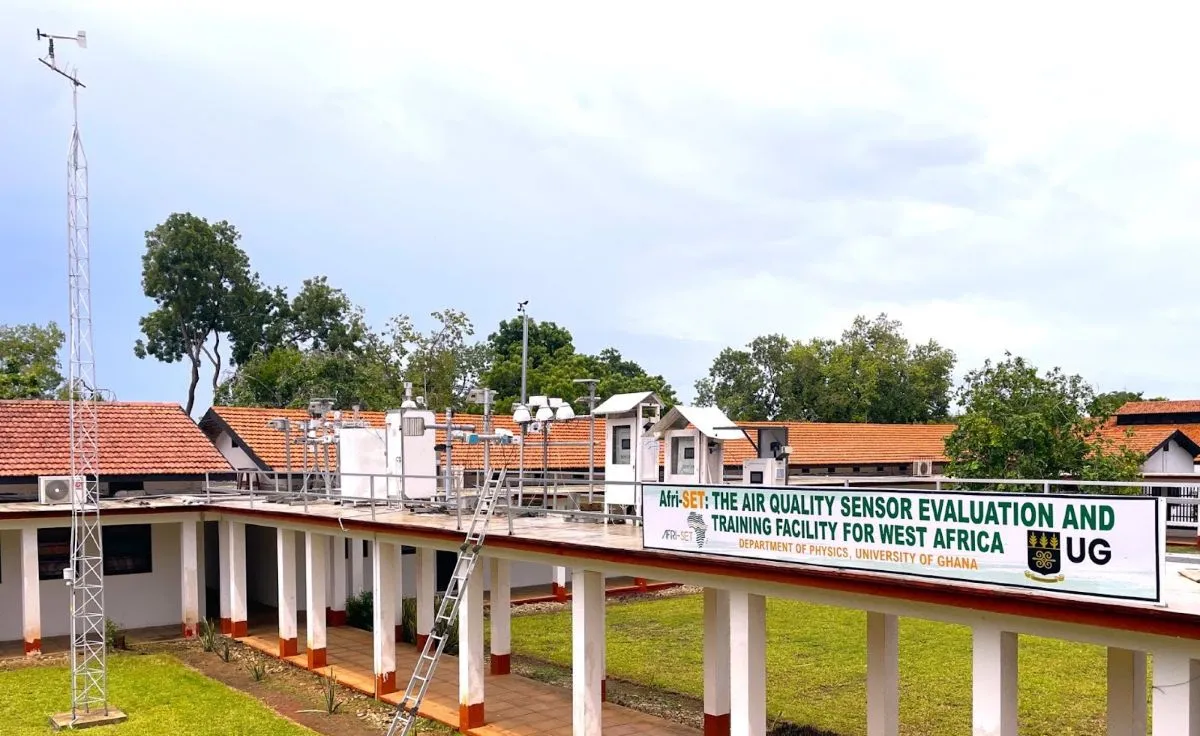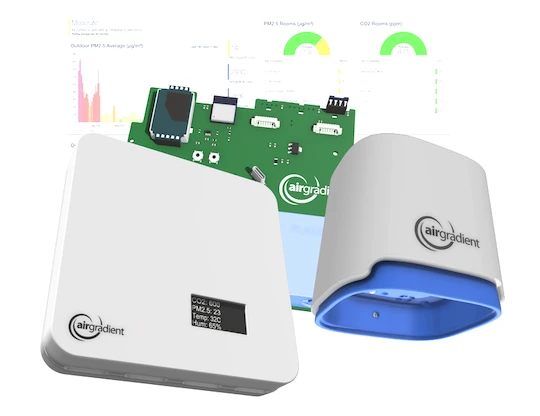Open and Accurate Air Quality Monitors
We design professional, accurate and long-lasting air quality monitors that are open-source and open-hardware so that you have full control on how you want to use the monitor.
Learn MoreYou might have the impression that your outdoor air quality monitor would work just as effectively anywhere else in the world, but that’s just not the case. Low-cost air quality monitors (LCS) are sensitive to various environmental conditions such as temperature, humidity, and different sources of pollution. In regions such as West Africa, these conditions are particularly unique, as they’re shaped by extreme seasonal shifts and the Harmattan period – a dry and dusty northeast trade wind phenomenon that occurs intermittently between the end of November and March.
Yet, most low-cost air quality monitors are designed, tested, and calibrated in the Global North, without considering how they will perform in diverse real-world environments.
“Africa has different weather conditions and different sources of pollution. So how the sensors perform in the Global South, particularly Ghana is likely to be different from how they perform in the Global North.” – Nancy Owusuaa, Administrative and Communication Officer, Afri-SET.
West Africa is developing fast, and because of this, the air quality is deteriorating. Even though millions of people are exposed to these harmful conditions, air quality monitoring in the region remains significantly under-resourced and inadequate. When it comes to addressing this problem, a good start would be to deploy low-cost monitors in under-served areas to resolve the data gap – but doing this alone is simply not enough.
While having access to low-cost air quality monitors is incredibly important, what’s more important is ensuring that these monitors will perform well in any given condition. This is where Afri-SET West (The Air Quality Sensor Evaluation and Training Facility for West Africa) steps in.

Based in the Department of Physics at the University of Ghana, Accra-Ghana, it is the first facility in Sub-Saharan
Africa that is dedicated to testing and evaluating the performance of low-cost air quality monitors in realistic African
conditions. To learn more about this process, I had the privilege of speaking with Nancy Owusuaa, Afri-SET’s
Administrative and Communication Officer, who walked me through how the evaluation of low-cost air sensors is done in
detail.
Each year, Afri-SET tries to evaluate at least 10 sensor types from different manufacturers around the world. For any
sensor to be evaluated by Afri-SET, the manufacturer is required to provide at least three identical sensors. These
sensors first undergo pre-deployment testing in the air quality laboratory to verify their power and internet
connectivity, data communication, transmission continuity, and recording interval (whether they log data at minute or
hourly intervals).
After this, the sensors are collocated with the reference monitors, TEOM and Teledyne T640, in the ambient environment to assess the PM2.5 and PM10 measurements. The sensors are left out for a total of 12 weeks – 6 weeks in the wet season and 6 weeks in the dry season including the Harmattan episode.
“In the global North, they have no Harmattan, they have four seasons. Ours is different, so therefore we must evaluate them to see how they perform in these African realistic conditions.”
Throughout each six-week period, they routinely assess the sensors and download data. Once the deployment period is over, the data collection is finalized and the evaluation begins.
When performing evaluations they look for the following key indicators: the accuracy and the precision of the sensors against their reference monitors. Once this is completed, the reports are generated and made available on their website.
“We have an Afri-SET website where we upload all these results for manufacturers to see how their sensors performed and for the general public to also make an informed decision when they want to buy a sensor.”
After the evaluation, Afri-SET calibrates the sensors by developing correction models for each one, tailored to the dry, wet, and Harmattan periods.
This work is crucial because air quality monitoring isn’t just about deploying sensors – it’s also about making sure they actually work by adapting them to local contexts. Imagine trying to build a network of outdoor air quality monitors for a community, only to realize that the data is inconsistent and fluctuating. If the readings are unreliable, researchers wouldn’t be able to develop accurate air quality reports, communities would struggle to trust the data that is supposed to empower them, and governments wouldn’t be able to implement effective clean air policies.
“The aim is ensuring that the quality of air we breathe is good. But how can we get to see that the air quality is good? We need to get the data, and getting the data has to start from the sensors.”
Beyond testing and calibration, Afri-SET extends its impact by hosting workshops and courses, equipping individuals with the knowledge and skills needed to monitor air quality. This aligns with their mission of “empowering communities and stakeholders with the tools and knowledge required to monitor and combat air pollution effectively.”
“People come here every time to be trained on how to evaluate sensors. We train people on how to calibrate sensors after they’ve been evaluated. We also do sensor assembly here for air quality professionals, students, and NGOs.”
Looking ahead, new programs are in development to further advance the organization’s mission. Their upcoming sensor loan program will ensure that individuals and organisations across West Africa will be able to borrow sensors to monitor their area’s air quality. Another event to look forward to is the upcoming micro-sensor challenge, in which 25 sensors, each in triplicates, will be evaluated against the reference monitors.
With each new initiative, Afri-SET continues to shape the future of air quality monitoring in West Africa for the better. We look forward to seeing how these programs will unfold, and how they will continue to build local expertise and ensure clean air solutions that address the region’s unique environmental challenges.
Curious about upcoming webinars, company updates, and the latest air quality trends? Sign up for our weekly newsletter and get the inside scoop delivered straight to your inbox.
Join our Newsletter
We design professional, accurate and long-lasting air quality monitors that are open-source and open-hardware so that you have full control on how you want to use the monitor.
Learn More